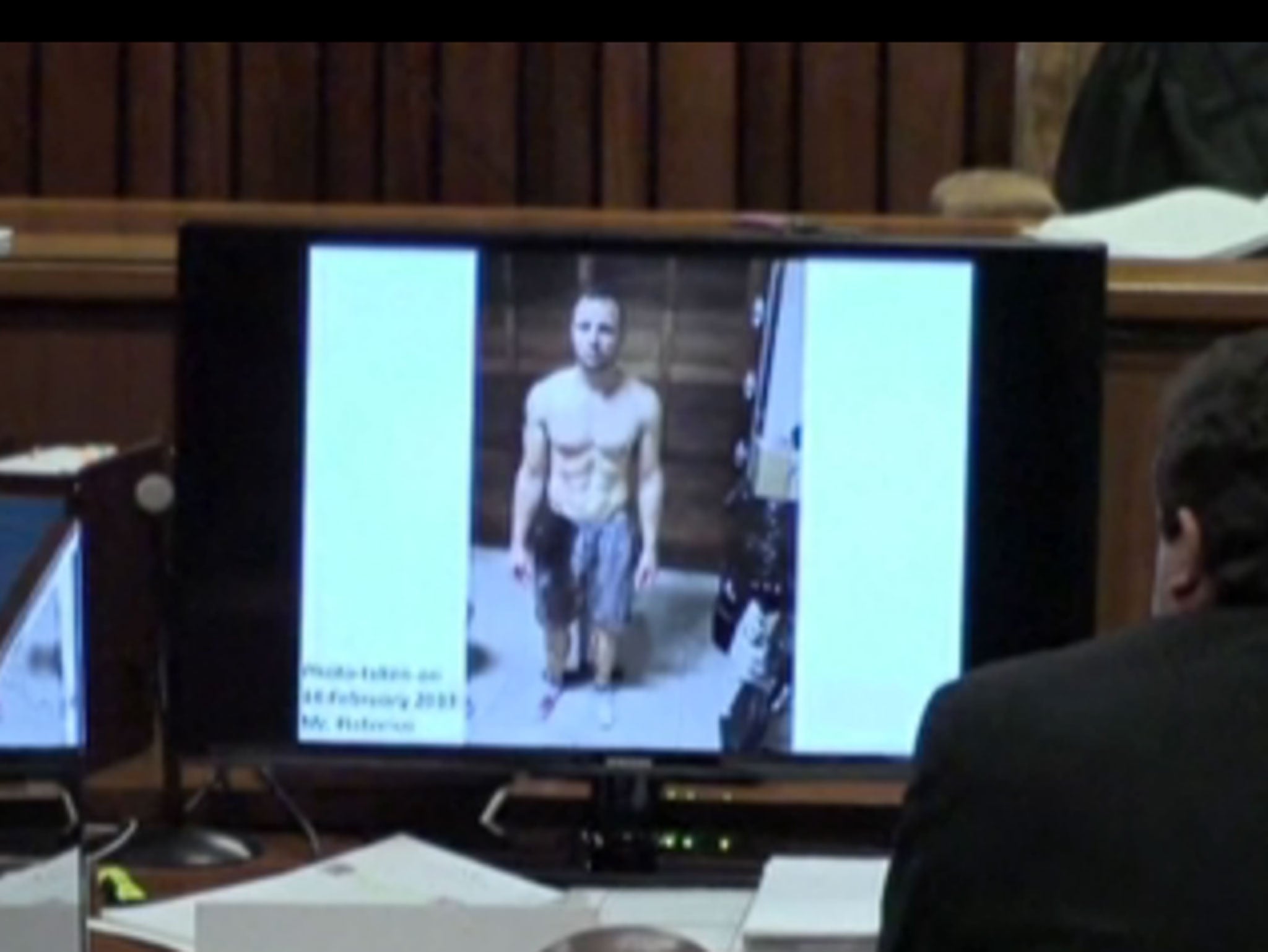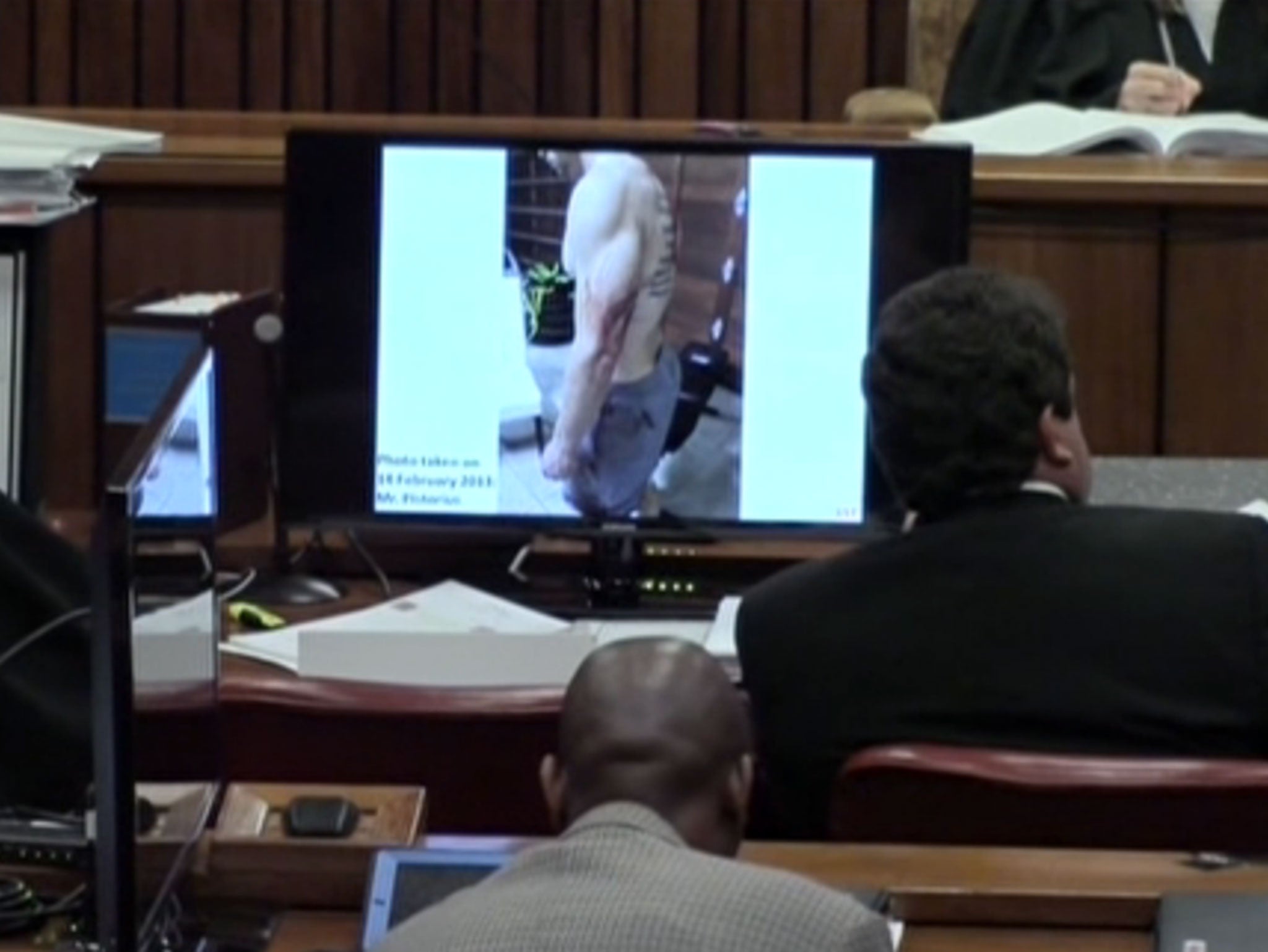Oscar Pistorius trial: Photographs of Paralympian splattered in blood after Reeva Steenkamp shooting shown in court
Photographs of Pistorius in the aftermath of fatal shooting shown in court

Bare-chested, and with blood over his arms, back and prosthetic legs, Oscar Pistorius’s murder trial was shown haunting photographs of the Olympian taken by police officers who arrived at his home shortly after he shot and killed his girlfriend, Reeva Steenkamp.
On the tenth day of the trial in Pretoria, the first police officer to arrive found the runner in a "very emotional state", and trails of blood throughout the property.
The images were taken by police photographers recording the scene in the immediate aftermath of the fatal shooting of 29-year-old model Reeva Steenkamp.
Bloodstains can be seen up to his knees and on his shorts, while his chest appears to be clean.
Ex-police station commander Colonel Schoombie van Rensburg, in charge of the crime scene, led the court through the images. He said he did not arrest Pistorius immediately, but warned him to remain at the house.
He said: "I told him I observed him as a suspect at that stage. I warned him of his rights. I said to him I wasn't arresting him at that stage... I requested him to remain present at all times at the scene."
The court also heard how the first officers to arrive contaminated crucial evidence, and stole one of the athlete's expensive watches.
Colonel Schoombie van Rensburg, the first police officer to arrive, told the North Gauteng High Court that he admitted a ballistics expert to the bathroom where Ms Steenkamp had been killed, and found him handling Mr Pistorius's firearm "without gloves."
Col van Rensburg said: "I was talking on my cellphone when I heard the firearm had been cocked. I stopped talking and said, 'What are you doing?' He said sorry and put the magazine back in the firearm. I was very angry."

He found a case of expensive watches from one of Pistorius's sponsors in the athlete's bedroom which was marked with blood, and therefore an important piece of evidence. Later when one of the watches went missing, he conducted pat downs and searches of all the officers present. "We even searched the cars," he said, but the watch was never recovered.
He also said he kept the the toilet door through which the fatal bullets were fired, in his office for more than two weeks after the incident occurred, rather than in an evidence room, having removed it from the scene in a body bag.
"The newspapers were offering 50,000 to 60,000 rand [around £3,000] for a picture of the door," he said. "We had to remove it." The only bags they had that were large enough for the extra large body bags.
He said he kept it in his office because "only I had a key. It was completely secure."
Pistorius maintains he mistakenly killed his girlfriend believing she was an intruder, hiding behind his toilet door.
If convicted, he faces a life sentence with a mandatory 25-year prison term.
The case continues.